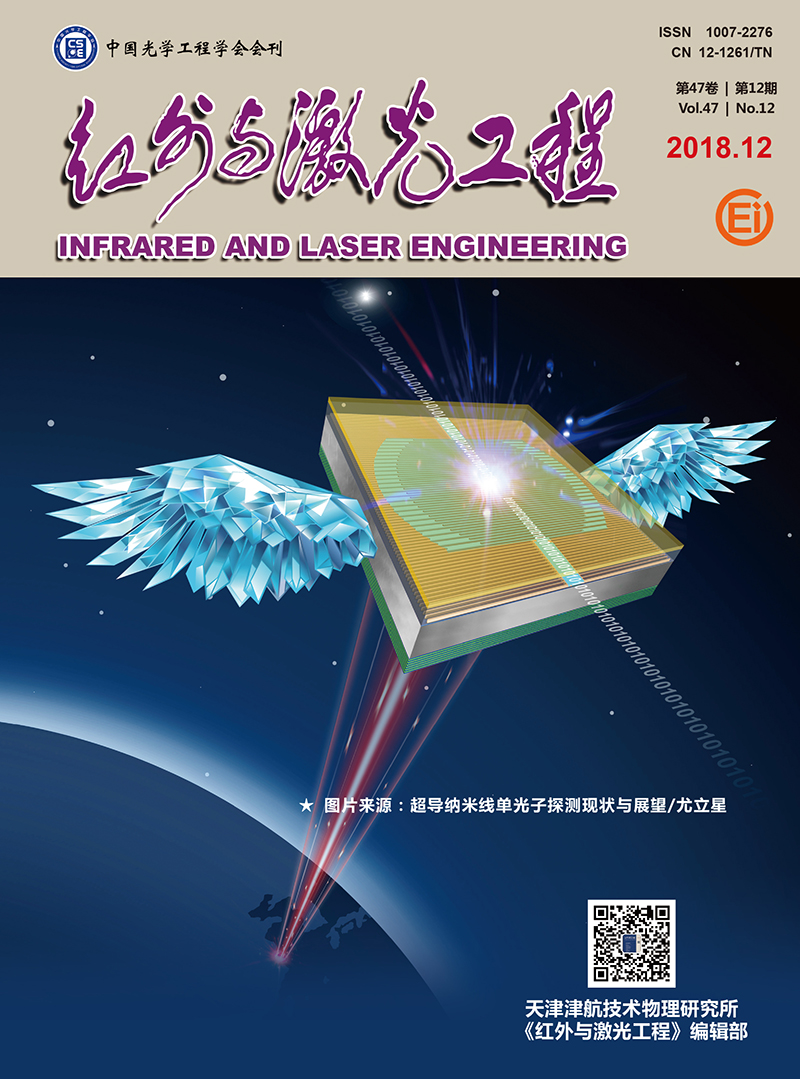Zhang Leqi, Zha Bingting, Zhang He. Method of eliminating saturation drift error of laser fuze[J]. Infrared and Laser Engineering, 2018, 47(12): 1206006-1206006(6). doi: 10.3788/IRLA201847.1206006
| Citation:
|
Zhang Leqi, Zha Bingting, Zhang He. Method of eliminating saturation drift error of laser fuze[J]. Infrared and Laser Engineering, 2018, 47(12): 1206006-1206006(6). doi: 10.3788/IRLA201847.1206006
|
Method of eliminating saturation drift error of laser fuze
- 1.
ZNDY of Ministerial Key Laboratory,Nanjing University of Science and Technology,Nanjing 210094,China
- Received Date: 2018-07-05
- Rev Recd Date:
2018-08-03
- Publish Date:
2018-12-25
-
Abstract
It is discovered that the jump point of the constant fraction discrimination(CFD) method moves forward when the laser receiver is saturated. In order to guarantee the range precision of laser fuze in short range, an error compensation algorithm based on the echo power equation was proposed for results correction. Firstly, based on a linear model to describe the pulse signal, the analytic expression of the saturation drift error was derived, and the relationship between drift error and echo signal slope was analyzed. Then, according to echo power equation, the compensation model of saturation drift error was established, in the case of the laser incidence on a specific target with a small angle. The error compensation expression was calibrated by experiment. Finally, a modified ranging formula was obtained. And the error compensation effect was tested by experiment. The results show that when the signal is saturated, the ranging deviates from the actual distance, and the deviation can be up to 1.4 m; due to the use of error compensation method, ranging deviation can be maintained between 0.5 m. Thus, this work can provide a theoretical reference for the design of miniaturized high precision laser proximity fuze.
-
References
|
[1]
|
Chen Huimin, Jia Xiaodong, Cai Kerong. The Technology of Laser Fuze[M]. Beijing:National Defence Industry Press, 2016:139. (in Chinese) |
|
[2]
|
An Haixia, Deng Kun, Bi Zhiyue. Miniaturization and lightweight technology of high-power laser equipment[J]. Chinese Optics, 2017, 10(3):321-330. (in Chinese) |
|
[3]
|
Zhang Liming, Zhang Yi, Zhao Xin. Study on flight time measurement laser ranging sensor based on TDC[J]. Transducer and Microsystem Technologies, 2011, 30(12):71-74. (in Chinese) |
|
[4]
|
Wang Shuai, Sun Huayan, Guo Huichao. Error analysis of time discrimination module based on Simulink[J]. Laser Infrared, 2017, 47(2):137-143. (in Chinese) |
|
[5]
|
Dai Qin, Geng Yue, Li Yeqiu, et al. High-precision measurement technology of laser pulse flight time based on TDC-GP21[J]. Infrared and Laser Engineering, 2013, 42(7):1706-1709. (in Chinese) |
|
[6]
|
Wang Heqi, Meng Fanjiang, Guo Lihong, et al. High precision data acquisition of control system for high-power TEA CO2 laser based on DSP[J]. Chinese Optics, 2011, 4(4):411-417. (in Chinese) |
|
[7]
|
Chen Xiangcheng. Research on echo processing methods and system of pulsed laser radar[D]. Hefei:University of Science and Technology of China, 2015. (in Chinese) |
|
[8]
|
Guo Ying, Chen Yi, Huang Genghua, et al. Method of automatic gain control used in high precision pulse laser range finder[J]. Laser Infrared, 2010, 40(4):345-348. (in Chinese) |
|
[9]
|
Chen Ruiqiang, Jiang Yuesong, Pei Zhao. High frequency and high accuracy laser ranging system based on double thresholds leading-edge timing discrimination[J]. Acta Optica Sinica, 2013, 33(9):1-8. (in Chinese) |
|
[10]
|
Xu Zhengping, Shen Honghai, Yao Yuan, et al. Scannerless laser active imaging validating system by directly ranging[J]. Optics and Precision Engineering, 2016, 24(2):251-259. (in Chinese) |
|
[11]
|
Yao Pingping, Tu Bihai, Wang Xiangjing, et al. Design and application of high-precision threshold circuit for laser proximity fuze[J]. Infrared and Laser Engineering, 2014, 43(4):1156-1161. (in Chinese) |
|
[12]
|
Zhang Xiangjin, Shen Na, Hu Xin, et al. Scattering properties of target surface in the laser short-range detection[J]. Infrared and Laser Engineering, 2017, 46(7):0706003. (in Chinese) |
|
[13]
|
Chen Huimin, Liu Xinyang. Backscattering polarization characteristics of pulsed laser fuze with coaxial optical system in water fog[J]. Optics and Precision Engineering, 2015, 23(3):626-631. (in Chinese) |
-
-
Proportional views

-









 DownLoad:
DownLoad: